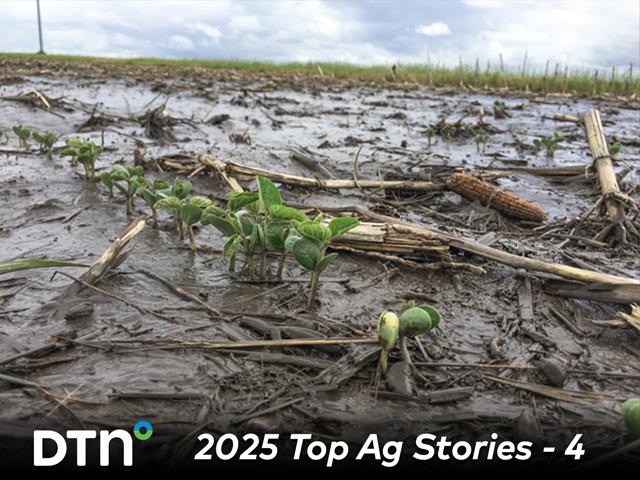Ag Policy Blog
USDA Spending up to $400 Million to Reduce Irrigation in Western States
USDA will spend up to $400 million to conserve as much as 50,000-acre feet of irrigation water by farmers across 12 western states under a new program announced Thursday.
Agriculture Secretary Tom Vilsack announced in a news release that USDA is investing up to $400 million with at least 18 irrigation districts to pay farmers to reduce their water usage but also continue crop production on the land as well.
"Agricultural producers are the backbone of rural communities across the West and many of them are struggling under prolonged drought conditions," Vilsack said. "USDA is taking an 'all hands' approach to help address this challenge, including these new partnerships with irrigation districts to support producers. We want to scale up the tools available to keep farmers farming, while also voluntarily conserving water and expanding markets for water-saving commodities."
Under the program, USDA will provide up to $15 million in each of the water districts across 12 states. Those funds will be used to support "producers using water savings technologies and farming practices while producing water-saving commodities in the face of continued drought," USDA stated.
If fully implemented, the initiative would reduce up to 50,000-acre feet of water usage across 250,000 acres of irrigated land in production, USDA stated.
Breaking that down, USDA stated the 18 districts would each receive up to $15 million. That comes to $270 million. At that number, the cost of each acre foot of water savings would come to $5,400 per acre foot.
DTN asked for clarification from USDA over whether the $400 million would all go to the 50,000 acre-feet reduction, which would come to $8,000 per acre-foot.
A USDA spokesperson said the money spent would go "up to $400 million," adding "To this end, these 18 irrigation districts represent only an initial selection – awards to additional districts may be possible in the future."
P[L1] D[0x0] M[300x250] OOP[F] ADUNIT[] T[]
USDA stated that producers who participate will receive payments for voluntarily reducing water consumption while maintaining commodity production on those fields. The needs of producers will determine the specific strategies for water conservation, including irrigation improvements, shifts in management practices, shifts in cropping systems, and other innovative strategies. USDA will learn from the diversity of strategies used and identify additional opportunities to maintain and expand water-saving commodity production in the future, USDA stated.
Participating producers and irrigation districts will commit to ensuring continued commodity production in the areas where water consumption is reduced. USDA is working to finalize agreements with the preliminarily selected districts, which will include the details of each individual district's water-saving strategies, commodities to be produced, and specific budgets. Following the finalization of those awards, producers within the participating districts will work directly through their irrigation districts to participate. USDA and the preliminarily selected districts will provide more details on the agreements and opportunities for producers to directly enroll.
Zippy Duvall, president of the American Farm Bureau Federation, said the funding would help improve crop productivity in western states.
"Farm Bureau appreciates that USDA recognizes the unique challenges faced by our western farmers and ranchers and others," Duvall said. "Prolonged drought conditions have threatened the sustainability of farms and ranches, and infrastructure improvements and crop productivity investments are needed to help farmers make it through the tough times. We look forward to learning more about the investment, and we urge USDA to provide flexibility as they deploy these resources."
A group of Democratic lawmakers from western states also praised the funding announcement as well.
"Family farmers, water users, and communities across the American West are facing the effects of a 1200-year drought and a changing climate. This is a five-alarm fire, and Washington ought to treat it that way," said Sen. Michael Bennet, D-Colo. "With this investment, the Biden administration answered our call to bring resources to bear that will help producers innovate and become more resilient to drought. I'm grateful for Secretary Vilsack's leadership in delivering this relief for Colorado and the West."
For more information, see https://www.nrcs.usda.gov/…
Chris Clayton can be reached at Chris.Clayton@dtn.com
Follow him on social platform X @ChrisClaytonDTN
(c) Copyright 2024 DTN, LLC. All rights reserved.






Comments
To comment, please Log In or Join our Community .